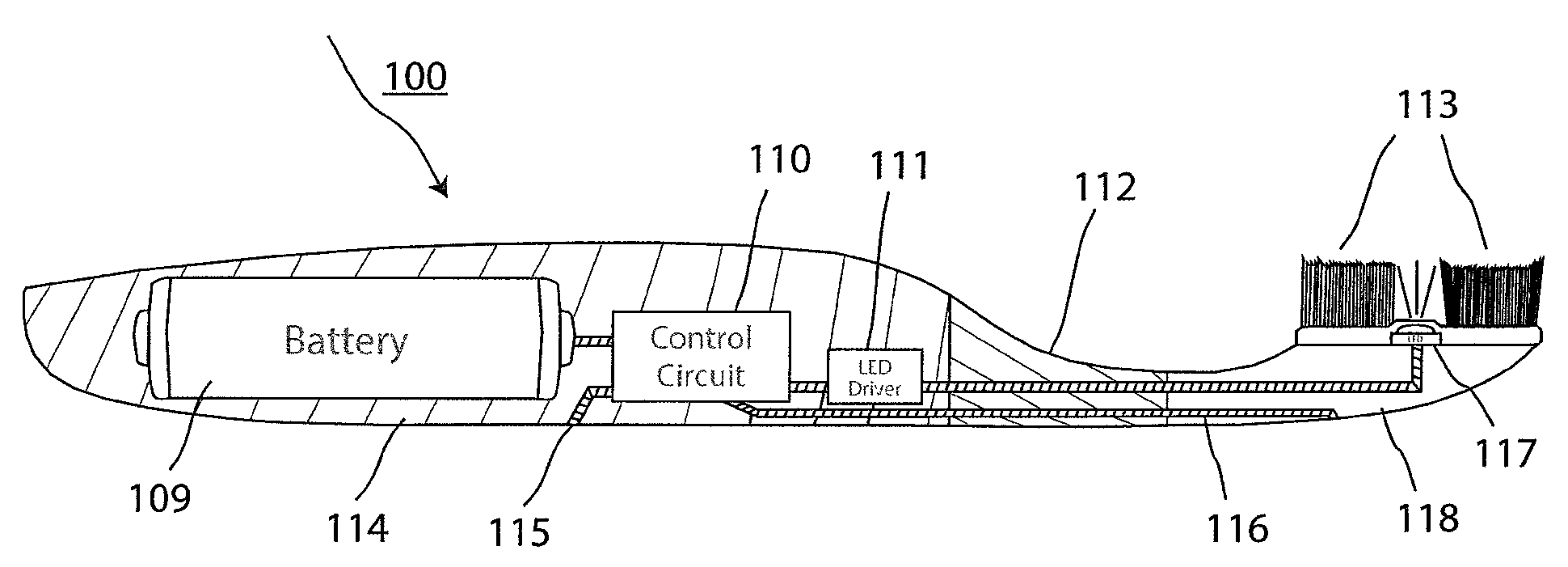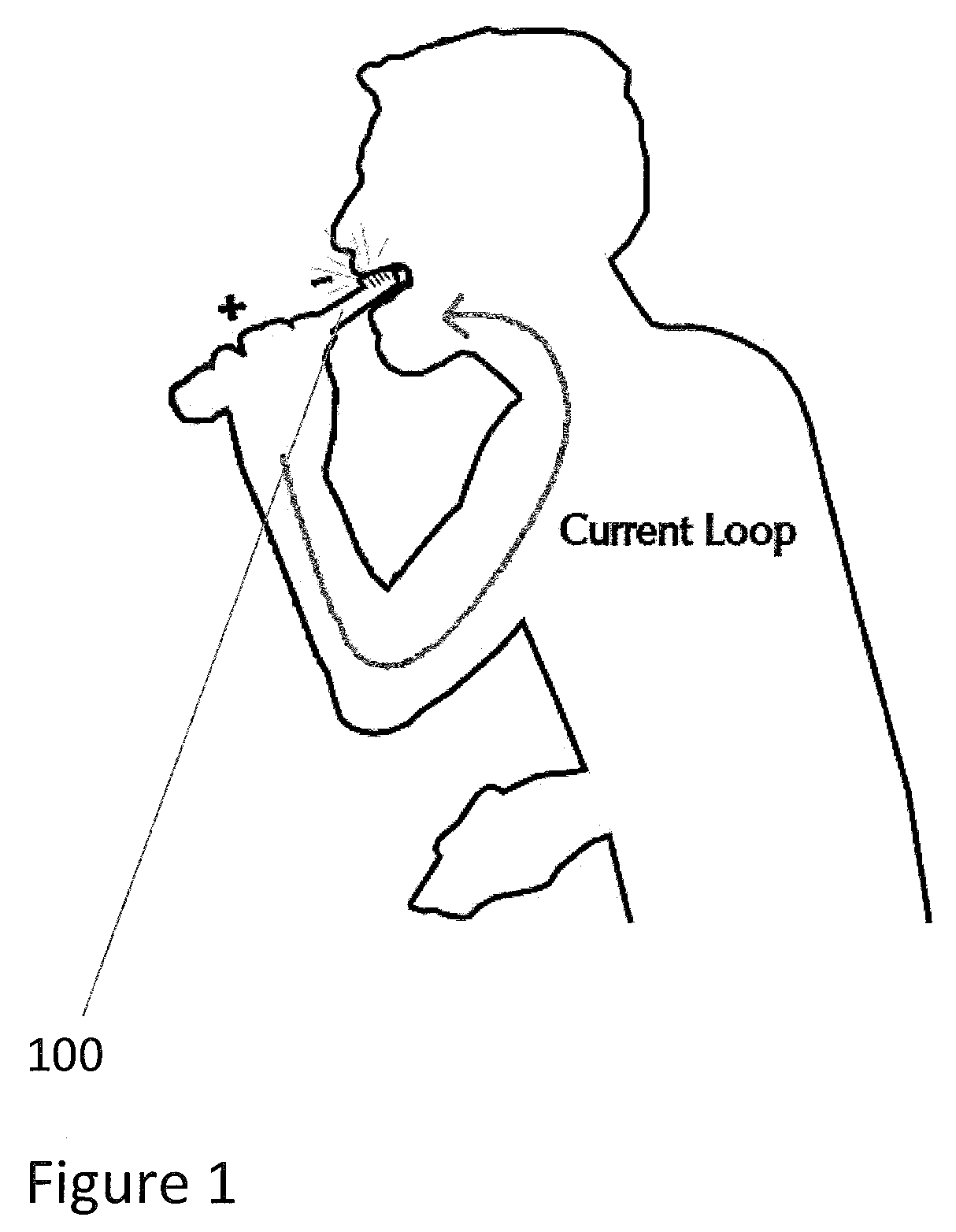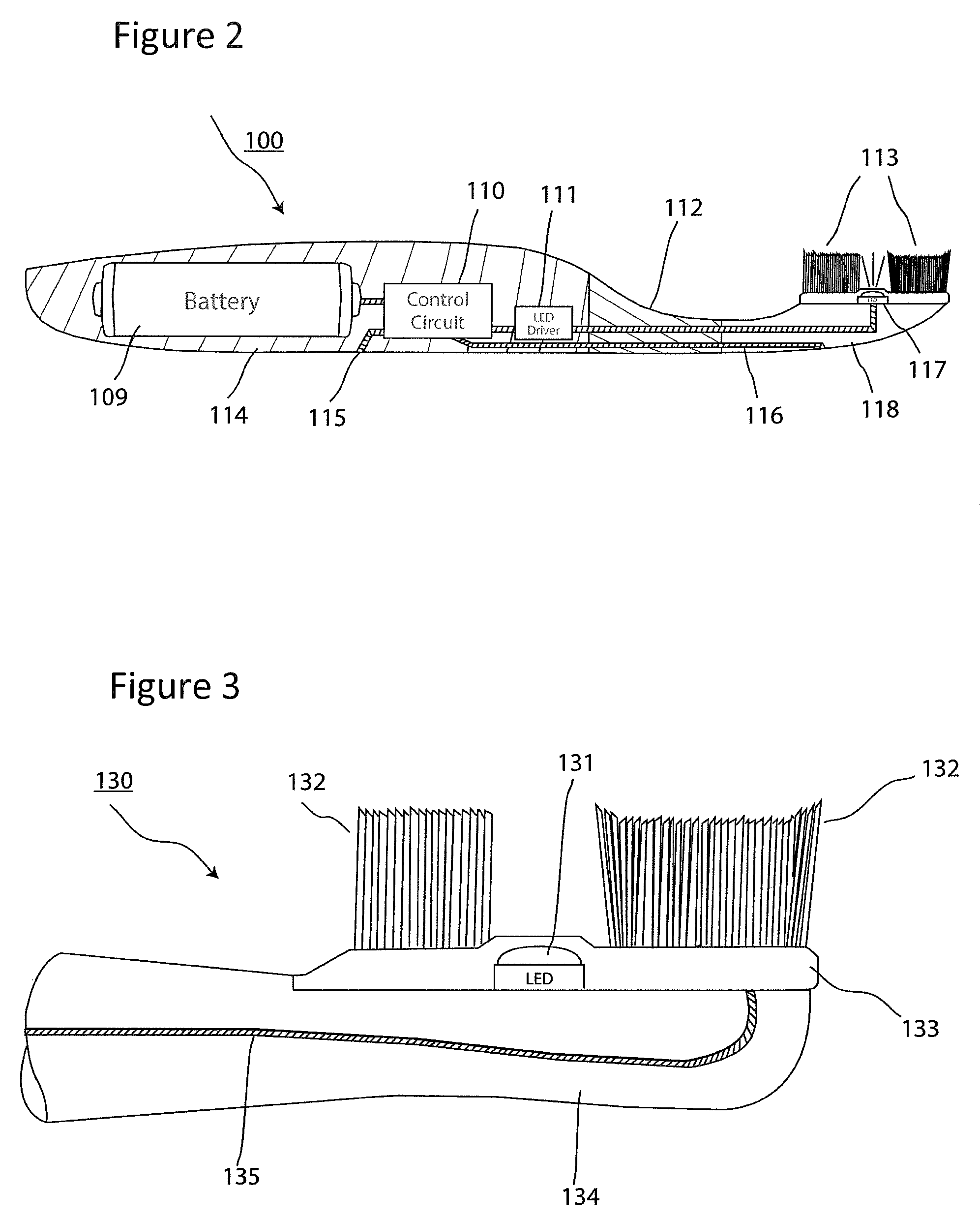Short wavelength visible light-emitting toothbrush with an electronic signal interlock control
a technology of electronic signal and visible light, which is applied in the field of dental hygiene implements, can solve the problems of discomfort or even eye damage to the end user, and the capacitive sensor would not work as well in this application,
- Summary
- Abstract
- Description
- Claims
- Application Information
AI Technical Summary
Benefits of technology
Problems solved by technology
Method used
Image
Examples
embodiment 130
[0037]In an alternate embodiment 130 shown in FIG. 3, conductive plastic is used in the part 133 of the brush connecting the bristles 132 to a sheet of conductive plastic 133, instead of the entire brush head. Alternatively, but also possibly in combination, as shown in FIG. 3, the bristles 132 of the brush may also be conductive. When wet bristles 132 come in contact with the mouth of the user during normal brushing operations a circuit is formed via a sense electrode 135 connected to the control circuit 110, which can be used to detect the completion of the electrical signal loop and signals the driver 111 to supply electricity to the LED 131. The remainder of the brushhead 134, is composed of non-conductive plastic.
[0038]Typically when brushing teeth, a user will grasp the handle 114 of toothbrush 100, apply toothpaste to the bristles 113 and place the brush head 118 in the mouth and proceed to brush their teeth. While the toothbrush handle 114 is in contact with the user's hand ...
embodiment 160
[0042]A further embodiment 160 is shown in FIG. 5. The handle has a portion 161 of conductive plastic, and the head has a portion 162 of conductive plastic. Portion 163 is non-conductive. The conductive plastic areas are connected internally to circuits as described in connection with FIG. 2 and so the toothbrush of FIG. 5 can be used in like manner to the toothbrush of FIG. 2.
[0043]The control circuit can also include a timer to turn off the LED at a preset time, such as two minutes, signaling to the user that tooth brushing has lasted two minutes, a sufficient amount of time. Other ways to signal the user of the completion of two minutes can be substituted.
[0044]A conventional make / break switch can be included in one of the conductors 115 or 116 or elsewhere in the electrical circuit, if desired. Thus, the signal loop is completed only if the user closes that switch AND inserts the toothbrush head into the mouth. This can provide a further safety and convenience feature. Alternati...
PUM
 Login to View More
Login to View More Abstract
Description
Claims
Application Information
 Login to View More
Login to View More - R&D
- Intellectual Property
- Life Sciences
- Materials
- Tech Scout
- Unparalleled Data Quality
- Higher Quality Content
- 60% Fewer Hallucinations
Browse by: Latest US Patents, China's latest patents, Technical Efficacy Thesaurus, Application Domain, Technology Topic, Popular Technical Reports.
© 2025 PatSnap. All rights reserved.Legal|Privacy policy|Modern Slavery Act Transparency Statement|Sitemap|About US| Contact US: help@patsnap.com



